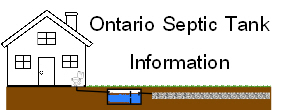Here we look at myths within the septic system industry.
The septic tank is only capable of treating the sewage to a 60% treatment level, even at maximum performance with optimal bacteria. The remaining 40% of sewage treatment occurs in the septic bed or other treatment unit.
During the 60’s and 70’s that mentality was quite rampent and a significant amount of septic tanks were actually installed without a lid for pumping. That’s how confident people were about a tank never needing to be pumped out. Unfortunately though, that theory never materialized because we have had to service a lot of those old tanks. With today’s increased water use and anti-bacterial soaps and cleaners, the bacteria in the tank simply can’t consume the solids fast enough.
I often ask, what do you mean by “never had problems?”. Most of the time the response is that it has never backed up into the house. Well, that doesn’t mean the system hasn’t started to fail during heavy rains or spring thaw. Septic systems fail gradually over many years. By the time it backs up into the house, it has actually been failing for many years but never got to a catastrophic state. If the owners had actually taken a look at the tank periodically to see if it was backing up after heavy rains or was almost full* of solids then they would have been able to be proactive and greatly reduce the chance of failure. *Full means that the total amount of solids are equal to or greater then 1/3 the total volume of the tank.
Many evaporation systems have been experimented with in Ontario and have failed. Essex County was host to quite a few in the 80’s but all of them have since been abandoned or converted to conventional systems because they simply can’t evaporate the water fast enough. Our climate is just to humid, and very little evaporation occurs in the winter.
A septic bed is meant to be aerobic because the most efficient bacteria that remove harmful bacteria and viruses breath oxygen. The bacteria that consumes e.Coli is an example.
It is all about the total number of bedrooms. That is the most accurate way of determining the maximum potential of the residence. It can be assumed that for each bedroom, 2 people could live there. The septic system must be designed to handle that maximum potential regardless of how many people will be living there or how frequently the residence (cottage) will be used. Only after the bedroom number is accounted for does the total number of bathrooms or square footage apply.
